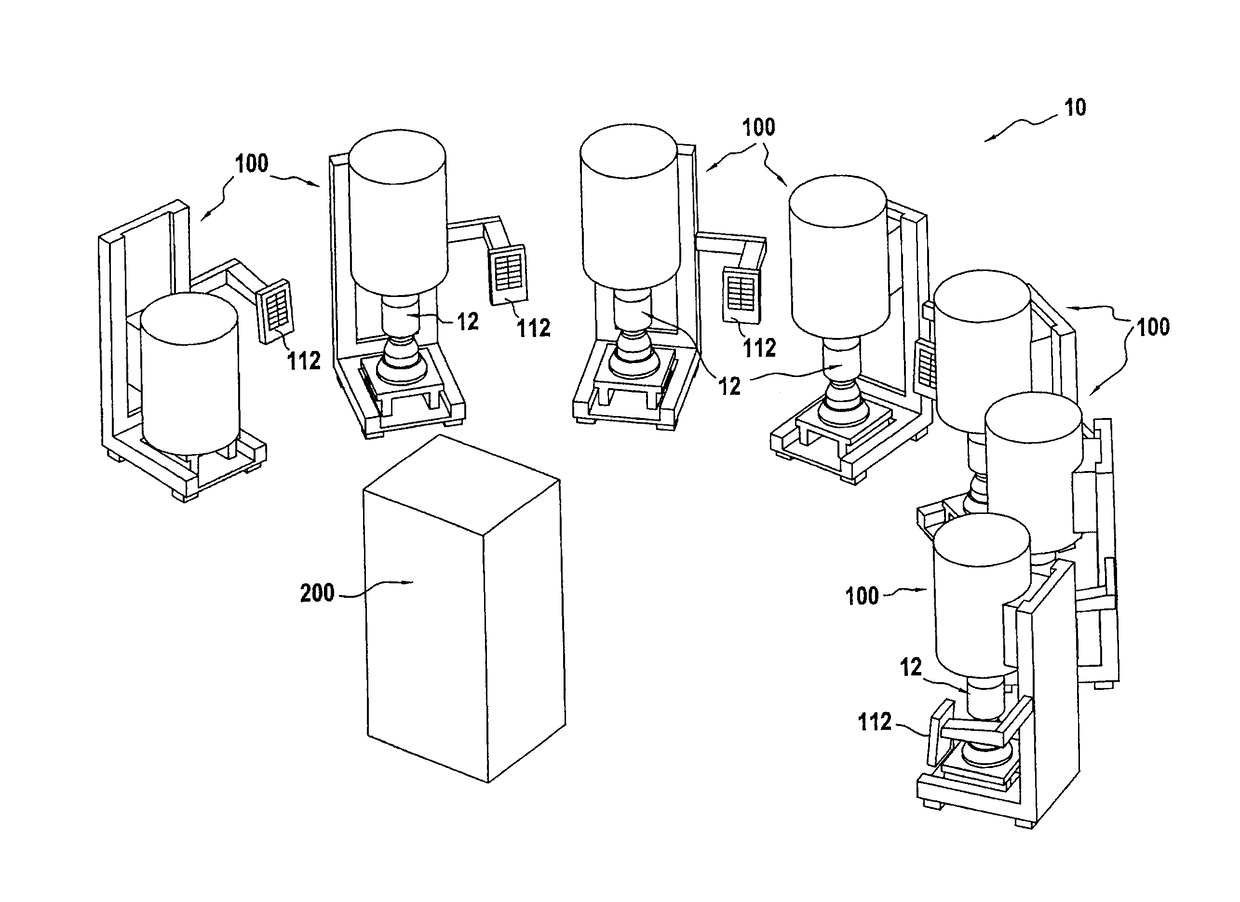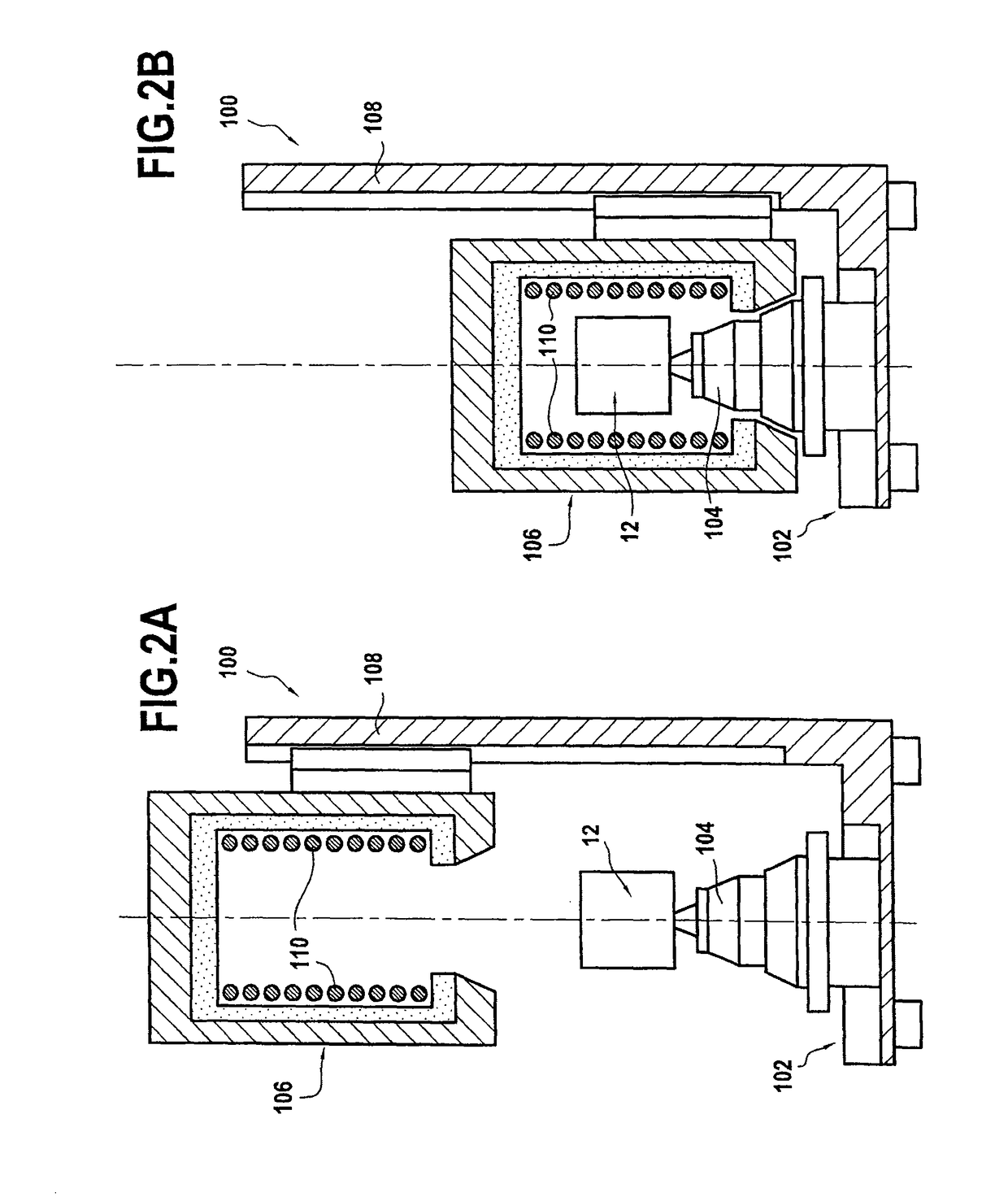Method of preheating a set of shell molds for lost-wax casting
a shell mold and lost wax technology, applied in the field of preheating the shell molds, can solve the problems of inability to change the temperature profile, the temperature of the shell mold within a single batch is not uniform, and the production management is not flexible, so as to reduce the waiting time for the change of the setpoint temperature and reduce the loss of productivity
- Summary
- Abstract
- Description
- Claims
- Application Information
AI Technical Summary
Benefits of technology
Problems solved by technology
Method used
Image
Examples
Embodiment Construction
[0029]The invention relates to making metal parts by lost-wax casting, e.g. metal blades for a low pressure turbine or ring sectors for an aviation turbine engine.
[0030]FIG. 1 is a diagram showing an embodiment of a preheater installation 10 for performing the method of the invention for preheating a set of N shell molds 12, the shell molds 12 being used for making such metal parts by lost-wax casting.
[0031]In known manner, the shell molds are fabricated around wax models of the metal parts that are to be made by performing alternating and repeated operations of dipping in a ceramic slip and of stuccoing ceramic materials. The shell molds are then fired in a kiln in order to enable them to acquire the mechanical strength needed for withstanding the casting of molten metal. In order to avoid any thermal shock between the molten metal that is poured at very high temperature (typically higher than 1000° C.) and the shell molds that receive the metal, the molds are subjected to a prehea...
PUM
| Property | Measurement | Unit |
|---|---|---|
| temperature | aaaaa | aaaaa |
| temperature | aaaaa | aaaaa |
| temperature | aaaaa | aaaaa |
Abstract
Description
Claims
Application Information
 Login to View More
Login to View More - R&D
- Intellectual Property
- Life Sciences
- Materials
- Tech Scout
- Unparalleled Data Quality
- Higher Quality Content
- 60% Fewer Hallucinations
Browse by: Latest US Patents, China's latest patents, Technical Efficacy Thesaurus, Application Domain, Technology Topic, Popular Technical Reports.
© 2025 PatSnap. All rights reserved.Legal|Privacy policy|Modern Slavery Act Transparency Statement|Sitemap|About US| Contact US: help@patsnap.com



